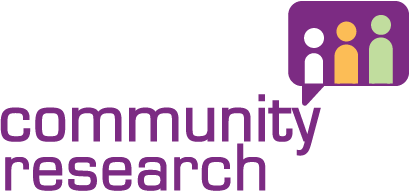Virtual (new) reality: embracing online focus groups
The focus group has always been the stalwart in the researcher’s toolbox of qualitative methods. Most of us cut our teeth on coaxing a reluctant group of strangers to consider cat food adverts (or similar) in a wretched fleapit in the West Midlands (or similar) at 9 o’clock on a wet November evening. We spent our formative years studying Tuckman’s group dynamics, the subtleties of non-verbal communication, and practising managing dominant and reluctant respondents. We’ve experienced the deep insight and creative nature of groups, with humbling moments of participants bonding while sharing some of their most difficult moments, and groups sparking ideas off one another with the fizzing dynamism of a Catherine wheel.
So how, then, do we adapt these skills to a world where human interaction is frequently determined by bandwidth and accidental self-muting? Can we replicate the benefits of the focus group online?
While we’ve used online qualitative methodologies (such as online discussion forums) routinely for a while now, but always favoured in-person focus groups. We switched to online focus groups when face-to-face was no longer an option, but now we’re starting to realise some of the benefits. Here are some of our lessons so far…
We’re all becoming more used to interacting in this way
A year ago, we might have struggled to get online focus groups going amongst all but a fairly narrow audience (i.e. the tech-savvy digital natives). Now, however, most of us have had months of Zoom pubs, meetings, quizzes, and parties. We’re far more used to interacting with each other in this way and have learnt the new social code of live online discussions. This makes it easier for us researchers: although we still have to start off with some ground rules for participation (raising hands to speak; muting when others are speaking) – people are used to many of these systems. They are more patient with the standard teething problems that accompany online group sessions, such as accidental muting, helping people find an turn on webcams, and interruptions by nagging children.
Some people even prefer it!
We’re finding that some people feel more comfortable and confident in online groups than in-person groups. They feel both more at home in the comfort of their own homes, but also oddly more anonymous and therefore more open and confiding.
The other obvious benefit is that online groups are actually more accessible for a number of people. We reach people who are in more far-flung and rural communities, whereas in-person groups tend to be held in larger towns and cities. We also are able to include people who find it hard to travel to and attend focus groups in central locations. We talked about this in our interview with Gordon McCullough of the Research Institute for Disabled Consumers.
Cheaper and easier logistics
There is no doubt that it is easier for researchers, participants and clients to just turn up in their own living rooms to get involved in a group discussion. Online groups save us the hassle and cost of trekking to distant places and organising venues and refreshments. The technology also allows us to have private messages with individual participants (for example, to ask them to speak up/ hold back), and for clients to easily message us to probe specific questions (instead of the hand-written note surreptitiously dropped onto the moderator’s lap mid-group).
However, we have had to re-think how we make it as easy as possible for people to get involved. We have had to get to grips in detail with the technical steps that participants need to follow and explaining and adapting them to meet participants’ own skill levels and needs. Sometimes this means a lot of hand-holding leading up to (and during) online groups, so sometimes that one-to-one support replaces the time spent in organising travel and venues! However, it has the added value of forming a connection with participants before you even begin the conversation, which increases the likelihood of them ‘turning up’ and participating.
However, online focus groups are not the cost-saving approach that might be expected. We find that small groups (four participants max) are optimal to facilitate good discussions online, so we usually need to consider more online groups than in-person groups to reach a similar-sized sample.
Lends itself to a blended approach
We find that online groups work best as part of a multi-faceted approach, using other online and remote tools such as online asynchronous discussion forums, video-selfies, self-completion questionnaires and homework tasks. Because it is all online/ remote, it feels like a more cohesive exercise for participants. This is also beneficial for research on comms and behaviour because online groups bring us into people’s real lives and environments. We can therefore use online groups to avoid some of the bias that comes from the artificiality of a focus group in a hotel or viewing facility.
Undoubtedly there are some issues with online focus groups: they do not work for people who are digitally excluded or those who cannot rely on peace and privacy in their own homes. They can be beset by technology glitches, both from participants’ end and due to issues with platforms. We can also miss out on some of the subtleties of communication and group dynamics in remote discussions. However, in-person focus groups have never been a flawless or fully-inclusive methodology, and online groups have surprised us with hitherto unforeseen advantages. We will certainly be continuing to use them where we can harness the benefits of reach, candour and relevance to bring insight to our clients.

